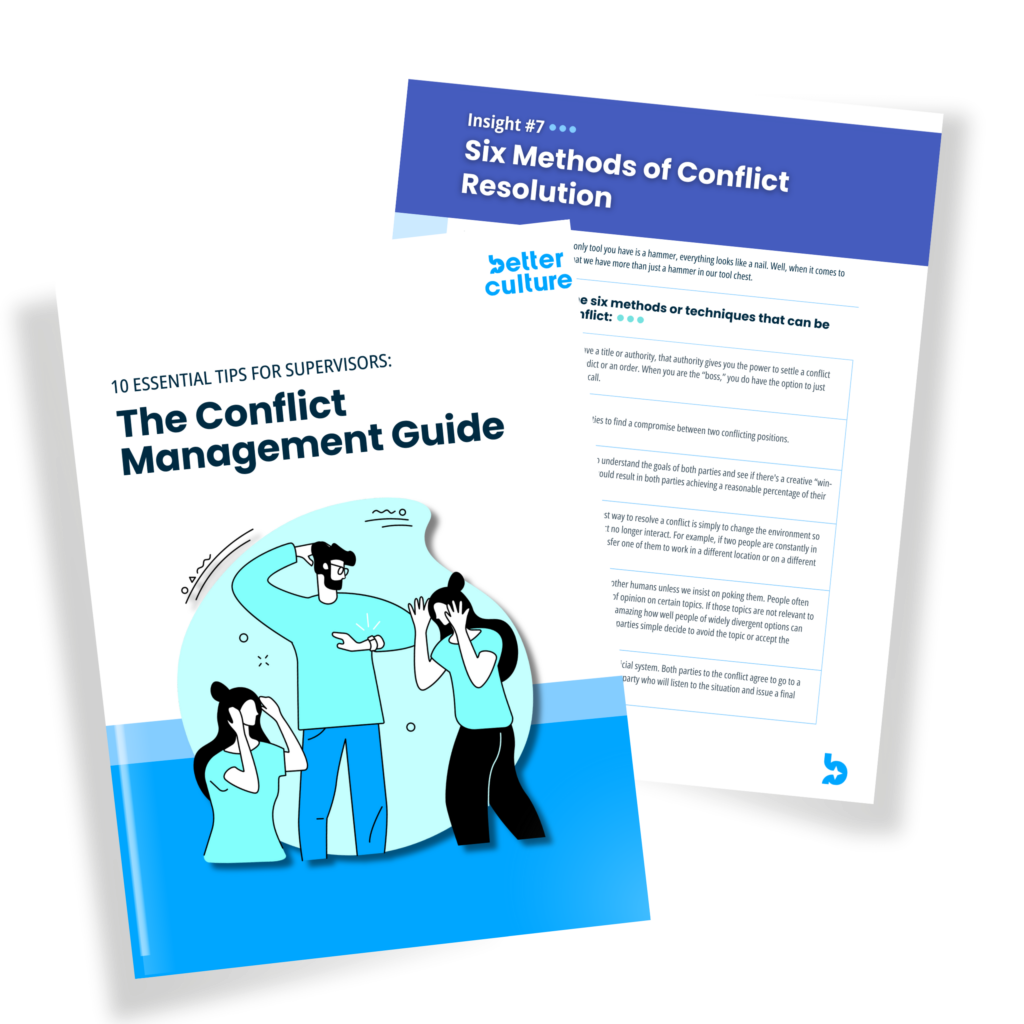At the invitation of owners and CEOs, I’ve enjoyed the opportunity to work with many executive teams. In some situations, I have been asked to lead or facilitate processes. In other instances, I have simply been asked to participate and consult. Occasionally, CEOs simply want me to observe and perhaps occasionally ask a question or toss an idea into the discussion should lightning strike my brain.
My interest in this topic goes back to my 25 years as a CEO of a large and growing enterprise. There were times when my executive team was amazing; and then there were times when it was…well, not so amazing.
So about 10 years ago I took time to analyze the culture of elite executive teams – those executive teams that consistently make great decisions and were reliably effective at implementation. I then augmented that by asking a dozen highly successful CEOs to describe the attitudes and interactional styles of what they would consider to be an IDEAL executive team.
The Truth About Executive Team Performance
Here are a few observations from my research and experience with high-performing executive teams:
- The quality and effectiveness of an executive team is highly determinant of the success of an enterprise. The best owners and CEOs understand the importance of this insight.
- The best teams I have seen were comprised of 5 to 9 individuals. A group of less than 5 individuals will lack the collective IQ points and breadth of knowledge necessary to address the range issues and opportunities before an enterprise; a team of more than 9 individuals allows for passivity and a dearth of intellectually dynamic interactions.
- The effectiveness of an executive team is determined by two necessary, but completely independent, components:
- 1) The quality and talent of each individual team member (talent capital)
- 2) The interpersonal dynamics (social capital) within the executive team.
- Good teams are comprised of individuals who are competent in their designated area of responsibility. Exceptional teams combine that talent capital with great social capital, i.e., team chemistry. Talented individuals in a dysfunctional team will produce little more than any individual could have done alone. Middling people in a healthy team will usually lead a pleasant process to mediocrity.
- Talent capital is about individual capability, while social capital is about how well those talented individuals function together. Talent capital is stable and somewhat fixed, but social capital can fluctuate based on team dynamics and leadership influence. The degree to which social capital is built and maintained reflects primarily on the leadership of the owner or CEO.
- Outliers with respect to camaraderie with other team members are incredibly easy to spot. Whether they are overly assertive, disengaged, cynical, or passively stubborn, their negative impact on the functioning of the team will be significant.
- Members of executive teams tend to be well compensated. As such, owners and CEOs (a) are foolish if they settle for subpar talent, and (b) should insist that executive team members live up to the expectations for the social capital of the team.
The second part of that last bullet point, however, suggests that the CEO or owner has clarity of thought as to what those attitudinal and behavioral expectations should be for members of their executive team.
When we find an executive team with subpar social capital, there are three possible reasons:
- The CEO does not have clarity of thought as to what those interactional expectations should be.
- The CEO does not have the backbone to enforce those standards.
- Both.
There’s a limited amount that I can do for readers of this blog to help build backbone, but I can share some thoughts to define the elements of the social capital that an owner or CEO should insist upon for their executive team.
Building Social Capital on Your Executive Team
One of the services we provide through BetterCulture is working with owners and CEOs to plan and execute executive retreats. On many occasions, a BetterCulture consultant will facilitate those retreats. BetterCulture Executive Retreats fall into three categories:
- Executive Team Functioning. A retreat that uses discussions and activities designed to assess and build the social capital within the group.
- People and Culture Strategy. A retreat to assess the current cultural health of the full organization and to create a realistic and detailed strategic plan for cultural health.
- Executive Development. Retreats designed to develop the leadership skills and effectiveness of each executive team member.
BetterCulture has programs and processes to accomplish all three objectives, but we commonly recommend that organizations address category #1 (executive team functioning and social capital) before turning to category #2.
Executives will find it challenging to build a healthy culture within an organization when their executive team lacks strong social capital. If you attempt this, employees will likely have a cynical attitude of, ‘Physician, first heal thyself!’
Again, BetterCulture has created materials for building the social capital within an executive team that can empower a CEO to lead that process themselves, or a BetterCulture consultant can facilitate the process. Either way, the objective is to establish clear expectations for an interactional dynamic that will enable an executive team to get maximum benefit from the collective talent capital in the room.
Five Characteristics of High-Performing Executive Teams
Here are five specific executive team dynamics that BetterCulture consultants focus on with our clients. These factors characterize executive teams with outstanding social capital.
Characteristic #1
The team is comprised of individuals who have diverse skills and unique interpersonal styles and does a good job of assigning the best equipped person to take a leadership role on a given task or project based on those unique skill sets.
When executive teams do this well, individual team members have an awareness – and a genuine appreciation for – the skills and abilities of their executive team colleagues.
Such teams have adopted a healthy operational approach that BetterCulture calls power flux – a dynamic leadership approach where responsibility shifts fluidly to the most qualified team member based on the task at hand.
Characteristic #2
Members interact with openness and candor; they embrace intellectual conflict, viewing it as a healthy sign of passion and vitality.
Exceptional companies recognize that the constant pursuit of excellence requires systems to embrace change – but systems don’t like change any more than most of us do as individuals. So, change almost always comes at the price of at least some conflict. The key insight is this: conflict is the price we pay for the pursuit of excellence.
It requires a certain perspective – and perhaps maturity – to understand that wanting to make the best decision is different than wanting to win an argument. The best executive teams are populated by members who are focused on how their team can reach the best possible decisions – far outstripping the importance of any individual being right. They recognize that it is often passionate, assertive discussion (even argument!) that propels a team to excellence. Argument is a gift, or at least it can be. As David Hume brilliantly said: “Truth springs from argument among friends.”
Good executive teams grasp that intellectual conflict is a sign that their team is populated by passionate and committed members; they revel in a culture where intellectual conflict is welcome and personal conflict is not – where ideas battle and people collaborate.
Characteristic #3
There exists a common preference for a participatory decision-making process, yet once a decision is made, all team members support it completely.
This one has three key components:
- Soliciting Input from the Right Sources: The quality of decision-making improves when teams leverage the collective intelligence of all bright and capable individuals in the room. Beyond that, do executive team members appropriately seek input from those outside the team who can provide valuable expertise?
- Communicating the Decision Effectively: Once a decision is made, executive teams should clearly articulate the rationale behind it. Employees appreciate understanding the HOW and WHY of major decisions.
- Unified Execution of Decisions: After discussion, debate, and even argument, there comes a time when the responsible leader must make a call. On strong executive teams, every member gets behind the decision. Even if there was disagreement, once the meeting ends, all members support the decision fully.
Characteristic #4
Members of the executive team regularly do PR for one another.
Leaders who are respected – and even admired – are more effective than those who are not. So how does one become respected and admired?
The prime driver of a given leader’s reputation will be their daily performance, but reputations can be substantially improved by another factor: the degree to which other people take the time to say nice things about a leader. Every executive team member has opportunities to do “PR” (Public Relations) for other members of their team. You can do this by telling others about the impressive – and true – qualities and contributions of that leader.
All it requires is for executives (by the way, this idea of doing PR for people who deserve it is a leadership skill that applies to EVERYONE – not just executives) to take a few seconds to share their personal respect or appreciation for one of their colleagues on the executive team.
It might sound like this: “Boy, Jeff caught a huge problem this morning that we were going to have with that software we were considering. It’s one of those times when few will ever say thanks because Jeff caught it before we had the problem. We are so lucky to have a CTO like Jeff!”
Again, reputations are earned, but you need not let them evolve solely by chance. Instead, good teammates will grab opportunities to promote the reputation of their colleagues both inside and outside the company. This practice has the added benefit of enhancing the confidence and pride of team members as they are made more aware of the outstanding individuals populating their organization.
Characteristic #5
Members encourage one another; there exists a high positive to negative feedback ratio within the group.
Leadership is seldom easy. At times it is downright hard. Although providing critical feedback is an important aspect of work relationships, it needs to be counterbalanced. Just as with children and friends, feedback for members of a top executive team will be most effective at a ratio of at least two positive comments for each comment that is critical.
When that ratio is maintained, your colleagues will remain open to constructive feedback and correction. When your interactions fall below this magic 2:1 positive to negative ratio, you should anticipate that your colleagues will soon become exasperated, defensive, or start to tune you out.
Some will assert that this “positive stuff” is not all that important or that it can be overdone. They are wrong. You cannot be too positive with your colleagues if the praise you give (and the appreciation you express) is genuine.
It may be true that many of your executive team colleagues don’t need a lot of praise. That’s not the point: those who have little need for praise still appreciate the praise.
The practice of acknowledging the success of others can also have a positive impact on your own worldview. As you increase your focus on the positive aspects of the people around you, it will help you to better appreciate the opportunity you have to learn from them. It will also enhance your relationships with individuals who have, and can continue to have, a positive impact on you and your company’s success.
Final Thoughts: Executive Leadership is Hands-On
There you have it – a sample of what we do at BetterCulture when we work with executive teams to improve their social capital. Shaping the culture and social capital of an executive team takes some time and regular attention. We often spend six to twelve hours with a given executive team during BetterCulture-led executive retreats working to evaluate and enhance social capital.
I want to close with both an optimistic note and a warning. The social capital of your executive team can be significantly improved by clearly laying out expectations and helping your individual team members recognize their responsibility to live up to those standards.
The warning? Healthy culture does not remain unless you continue to monitor and protect that culture. It is a lot like working with hot clay: with “hands on” leadership and a bit of time, you can shape a team to be strong and healthy, but if you take your eyes off it for too long it will undoubtedly start to sag.
If you’d like a little help shaping your executive team culture, give BetterCulture a ring. We’re here to help.




